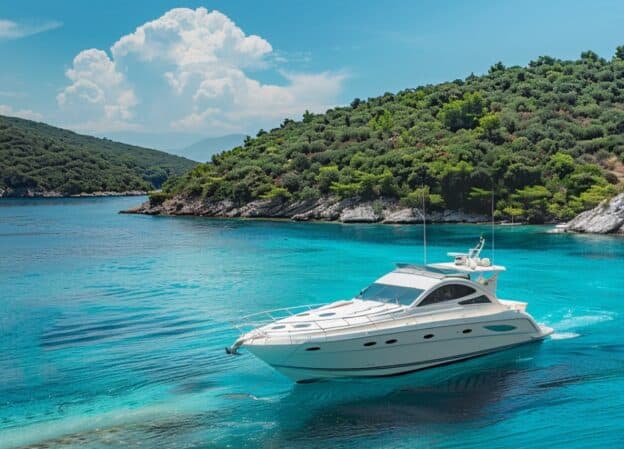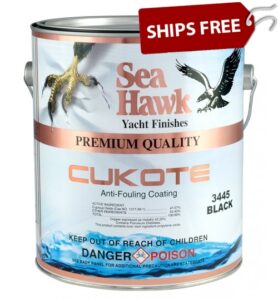Whether you own a small fishing skiff, a luxurious cruising yacht, or anything in between, taking care of your boat’s hull is crucial for optimal performance and longevity. One of the most pervasive and costly challenges boaters face is biofouling—when aquatic organisms like algae, barnacles, mussels, and tube worms attach themselves to your vessel’s hull and underwater gear. In this article, we will explore how biofouling impacts boat performance, discuss the most effective prevention strategies, and walk you through the solutions available to keep your hull in prime condition.
What is Biofouling?
Biofouling, sometimes simply referred to as “fouling,” is the accumulation of living organisms on surfaces submerged in water—boats, marinas, docks, pilings, and more. These organisms vary widely:
- Microfouling: Bacteria and microalgae (slime)
- Macrofouling: Larger organisms such as barnacles, mussels, tube worms, and seaweed
While certain levels of fouling are common, the longer it remains on the hull, the thicker and more challenging it becomes to remove. Over time, fouling can lead to significant damage and reduced performance.
How Biofouling Impacts Your Boat’s Performance
Reduced Speed and Efficiency
Fouling adds extra drag as your boat moves through the water, slowing it down and forcing the engine to work harder. A fouled hull can reduce speed by several knots, causing a noticeable drop in efficiency.
Increased Fuel Consumption
When friction increases, so does your boat’s fuel consumption. This not only hurts your wallet at the pump, but also leads to higher emissions—bad news for both your bank account and the environment.
Damage to Hull and Propulsion Systems
Barnacles and other hard-shelled organisms can damage the paint, gelcoat, or fiberglass underneath. Over time, fouling can also impair propulsion systems like propellers and bow thrusters, prompting costly repairs.
Impact on Handling
Heavily fouled hulls make it harder to steer and maneuver, especially in tight spaces. This can become a safety hazard when docking or navigating busy waters.

What You Can Do About Biofouling
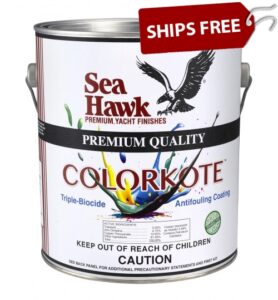
Color Kote is an excellent antifouling coating. It incorporates self-polishing, triple biocide, low-leaching chemistry, vibrant colors, and multi-season performance.
Invest in Quality Bottom Paint (Antifouling Paint)
The first line of defense against fouling is applying the right antifouling paint. This type of coating releases biocides or repellent agents that deter organisms from latching onto your hull. At BottomPaintStore.com, we offer a comprehensive range of antifouling paints—each formulated for specific water conditions, usage patterns, and hull materials. Key factors to consider:
-
- Type of water: Fresh, salt, or brackish
- Frequency of use: Frequent cruisers might benefit from paints with strong biocides and smoother finishes.
- Boat speed: Faster boats may need a different formulation than trawlers or sailboats that move more slowly.
Schedule Regular Hull Cleaning
Even with the best paint, a thin film of slime or algae can accumulate over time. Removing these early prevents larger organisms from taking hold. Routine diving or haul-outs to pressure wash the hull will keep fouling in check and ensure you’re running at peak efficiency.
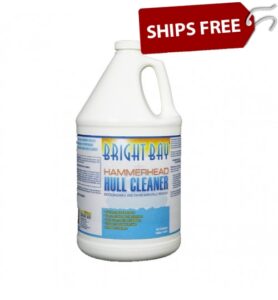
Hammerhead Hull Cleaner works great. It uses a unique acid-surfactant blend designed to remove marine growth, hard water stains, rust, and calcium buildup.
Use Specialized Tools and Gear
If you prefer DIY approaches, consider a long-handled hull scrubber or an underwater brush. Be sure to check local regulations: some marinas prohibit in-water hull cleaning due to possible pollution from paint particles and biocides.
Inspect Props and Thrusters
Props, shafts, thrusters, and other metal components are often made from different materials than the hull, requiring specialized antifouling strategies (e.g., PropGlide type coatings). Regularly inspect these components to remove any build-up that can compromise performance or cause galvanic corrosion issues.
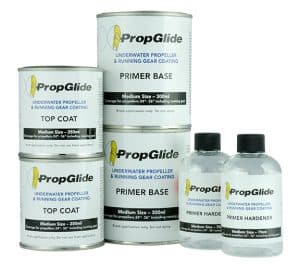
PropGlide® is an excellent alternative to Propspeed. You get 25% more product per kit size for 30% less cost.
Store Your Boat Out of the Water
If feasible, keeping your boat on a lift, a trailer, or dry storage is the most surefire way to reduce fouling. Out-of-water storage deprives organisms of the aquatic environment they need to survive, drastically minimizing hull maintenance.
Choosing the Right Bottom Paint
The best antifouling paint for your boat depends on several factors, and BottomPaintStore.com can help guide you through the process:
- Hard vs. Ablative Paint
- Hard Paint: Ideal for high-speed boats and locations with moderate to heavy fouling. It creates a tough, long-lasting coating but does not erode.
- Ablative Paint: Gradually wears away over time, continually exposing fresh biocide. Suitable for slower-moving vessels or those that spend extended periods at the dock.
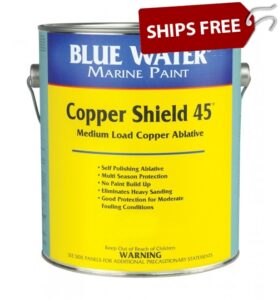
Great protection for salt and fresh water at a very attractive price. Provides multi-season antifouling protection against barnacles, algae, and hydroids. For boat bottoms only.
Copper-Based vs. Copper-Free
-
- Copper-Based: A traditional and widely used solution, effective in many fouling conditions.
- Copper-Free: Often containing alternative biocides or water-based formulas, making them an environmentally conscious choice while still offering robust protection.
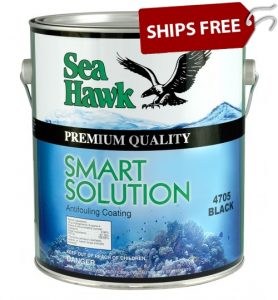
This copper free solution is designed to be the most effective environmentally friendly antifoulant available.
Biocide Level
Consider the potency and quantity of biocide in the paint. Higher levels may be more suitable in tropical waters, while moderate levels may suffice in cooler or less-fouling-prone regions.
Maintenance Tips to Maximize Results
- Follow Manufacturer’s Instructions
Always adhere to the paint manufacturer’s guidelines on surface preparation, application, curing times, and recommended thickness. Proper prep ensures better adhesion and maximum effectiveness. - Time Your Haul-Outs
Keep track of when you first apply the antifouling paint. Knowing your paint’s typical lifespan helps you schedule maintenance well before issues arise. - Monitor Your Boat’s Performance
Keep a record of engine RPM, speed, and fuel usage. A noticeable drop in speed or a spike in fuel consumption can be an early sign of fouling. - Don’t Neglect Above-Water Maintenance
Though the hull below the waterline gets most of the attention, an overall well-maintained boat is less likely to develop surprises. Keep an eye on topside paint, hardware, and interior systems to ensure a smooth boating experience.
Final Thoughts
Biofouling is one of the biggest contributors to reduced boat performance and increased maintenance costs. By understanding how these marine organisms attach themselves to your hull and knowing the steps to prevent them, you can keep your boat running smoothly, save money on fuel and repairs, and enjoy a hassle-free experience out on the water.
Ready to take the next step in safeguarding your boat? Bottom Paint Store provides a wide array of antifouling paints, primers, and surface preparation products. Our team of experts is here to help you select the best solution for your vessel’s size, usage, and local water conditions. We hope your boat stays fouling-free, and you enjoy your time on the water to the fullest!


